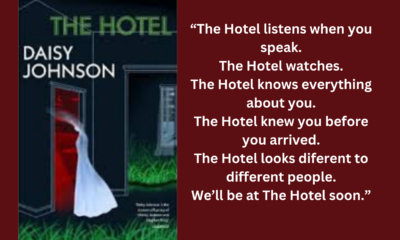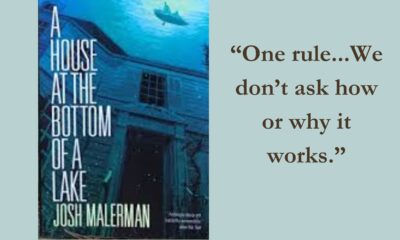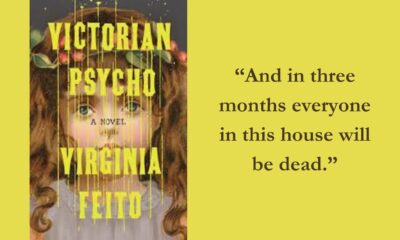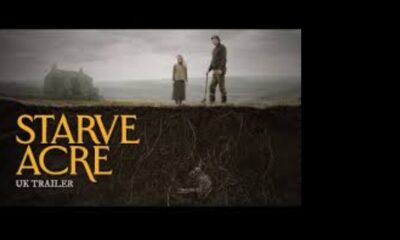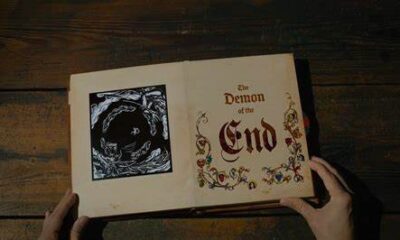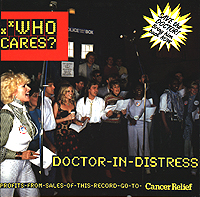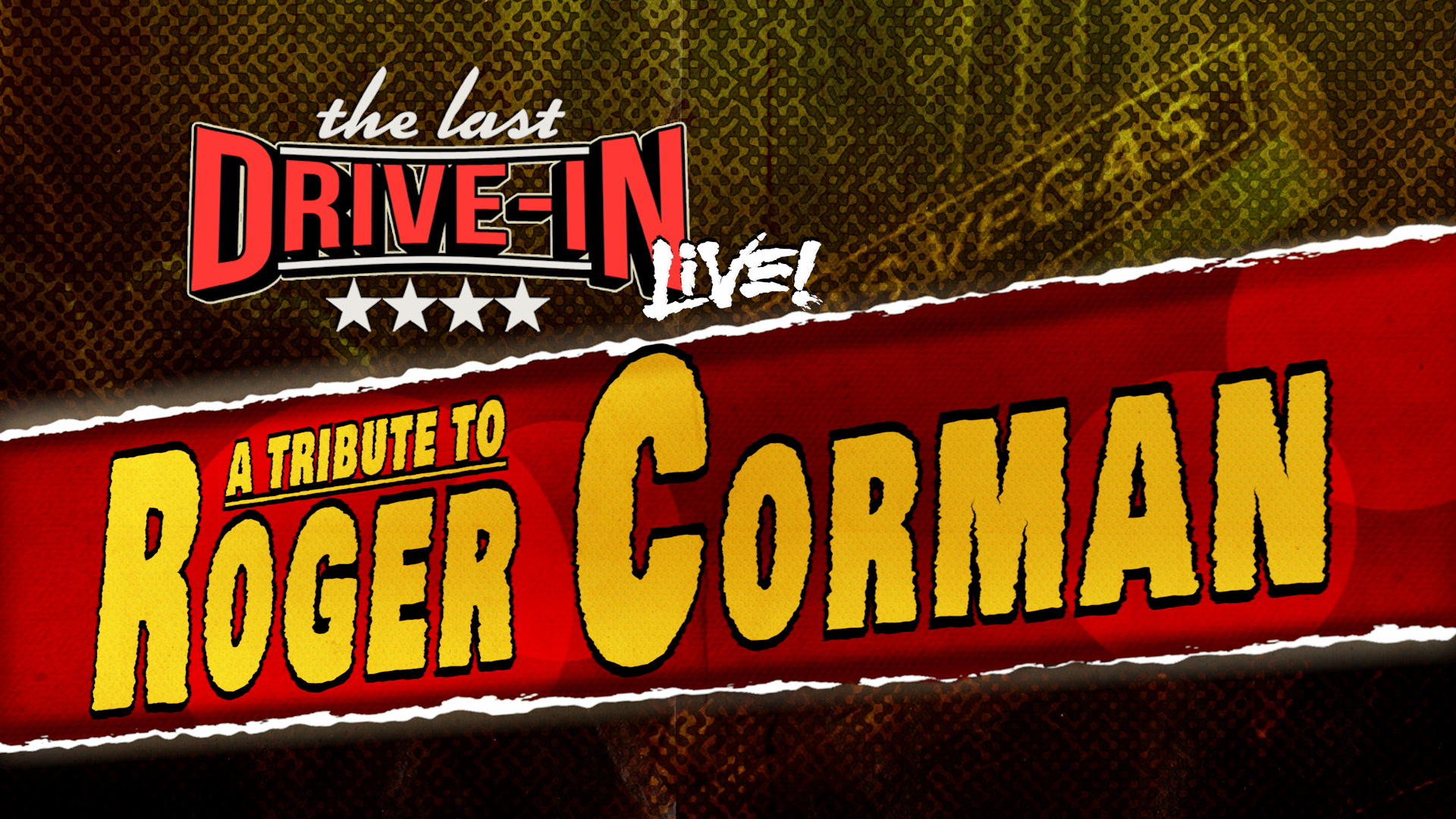
The Last Drive-In Live: A Tribute to Roger Corman
More Videos
Published
1 year agoon
The Last Drive-In with Joe Bob Briggs returned March 15th for a special tribute to Roger Corman. Filmed live in Las Vegas during Joe Bob’s Jamboree last October, fans who were unable to attend can finally see what they missed. The Drive-In is available on AMC+ and Shudder.
This week on The Last Drive-In, Joe Bob and Darcy return to pay tribute to Roger Corman’s first 70 years in Hollywood. Roger and Julie Corman join the hosts between films at the West Wind Drive-In for an incredible interview on stage. Legendary actor Bruce Dern is also part of the conversation. Spanning the decades, Joe Bob presents Corman’s A Bucket of Blood (1959) and Deathstalker (1983).
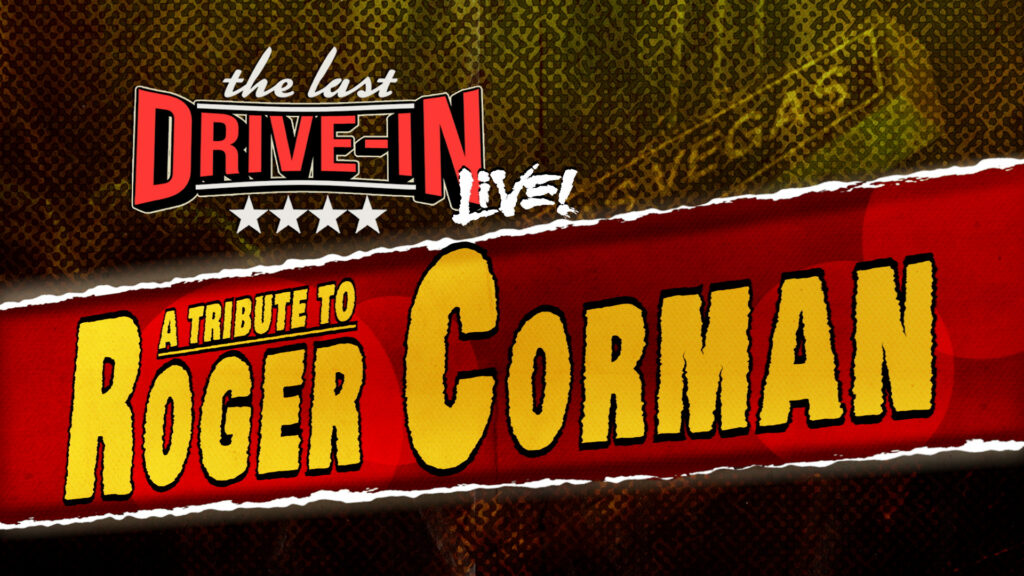
Live from Las Vegas
A Tribute to Roger Corman begins with a live rendition of the show’s theme song in front of the cheering audience. The stage brings the trailer park to Vegas with its familiar set-up of chairs and a cooler. John Brennan croons as Yuki Nakamura beats a colander with a stick before introducing the show’s hosts. Joe Bob gives a special shout-out to the Las Vegas Chamber of Cannabis before introducing Darcy the Mailgirl.
In place of a tangentially related rant, Joe Bob opens with focused praise of Corman. He lauds Corman’s ability to fully meld the business and art halves of producing. Bringing attention to how “cheap” Corman is, Joe Bob highlights the smart decisions that sustained Corman’s long career. He calls them “the decisions of a producer who is being an artist.” Corman’s ability to spot talent and negotiate deals connects him to the beating heart of Hollywood, and leaves Joe Bob “truly in awe” of him.
Beatnik City
Part of what makes Corman special is his fascination with new and culturally relevant ideas. A Bucket of Blood (1959), is perhaps the best example of his ability to take real life and turn it into art. Corman together with writer Charles B. Griffith spent time in beatnik coffeehouses to create what Joe Bob calls “the ultimate parody of the whole beat generation.”
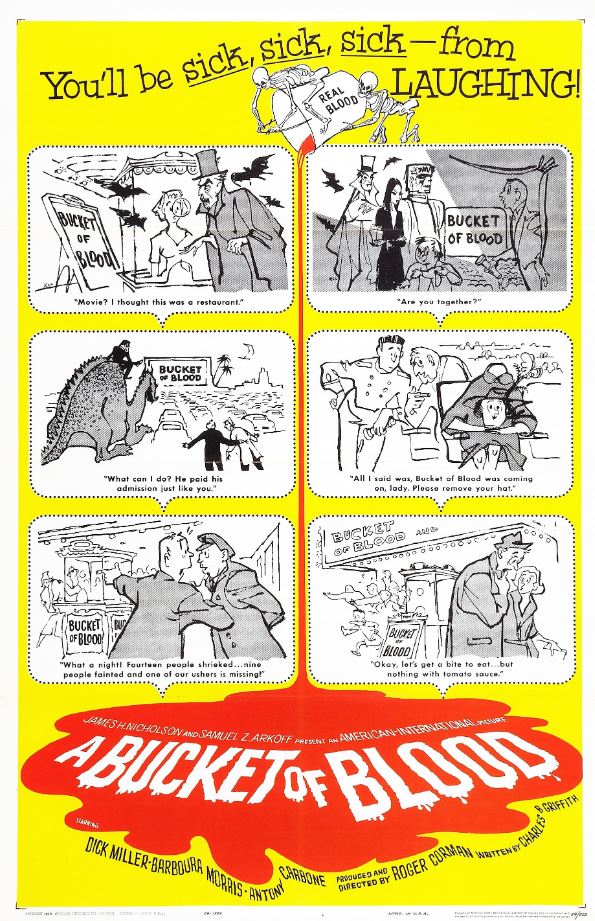
Bucket tells the story of Walter Paisley (Dick Miller), an impressionable busboy who is determined to impress the customers he serves. Jealous of the attention poet Maxwell H. Brock (Julian Burton) commands; Walter decides to become a sculptor. While attempting to sculpt the face of the coffeehouse’s hostess Carla (Barboura Morris), Walter inadvertently kills his pet cat. Seizing the opportunity, he covers the cat in clay and passes it off as original work. When the sculpture gives him a taste of the adoration he seeks, Walter continues down the dark path of melding murder with art.
The Drive-In Totals include but are not limited to: 4 dead bodies, 1 dead-cat sculpture, attempted busboy seduction with heroin, skillet fu, and gratuitous beatnik poetry. “Four stars. Joe Bob says, ‘Check it out.’”
Decisions, Decisions
Despite the film only being 67 minutes long, Joe Bob emphasizes how its length in no way limits the complete and complex story. Corman cuts down film times as a production decision. According to Corman, 78 minutes is the perfect length for a movie because it lowers distribution costs. Low run-times also make movies more likely to receive a television sale as it allows for more commercials.
Joe Bob credits Bucket with defining the acting style of Dick Miller and kicking off his career of playing oddball characters. The film also shows the strengths of Julian Burton as a character actor. Corman expected those in his films to continue in the industry, but not necessarily with him. Speaking about a conversation he had with Corman once, Joe Bob recounts him saying, “If you make a third movie for me, I tend to lose all respect for you.”
Budgeting
Bemoaning that a producer like Corman doesn’t exist for the modern age, Joe Bob asks the audience who they think could be analogous. Eric Butts gleefully shouts out “Lloyd Kaufman!” Darcy agrees with Butts, but Joe Bob doesn’t seem to think one truly exists. If one does, I agree that Kaufman is the closest thing. Joe Bob seems to think Blumhouse might be it, but concedes “they make expensive movies now.” Corman was not one to make expensive films even if it was within the budget.
Utilizing cost-saving measures, Little Shop of Horrors (1960) was filmed shortly after Bucket and utilized the same sets. Little Shop is the only Corman film in the National Film Registry. Joe Bob seems perplexed by this as Bucket and Little Shop are “identically structured movies.” Between the two, he believes Bucket to be the superior film.
When Darcy asks Joe Bob what he would do with $10 million in production funding, he says he would make 40 movies. Bucket of Blood 2, Gatorbait 3, and Hogzilla 2 are all thrown out as options. As soon as hogzilla is mentioned, the crowd bursts out in the now-familiar “Hogzilla! Hogzilla! Hogzilla!” chant. Being there, it felt good to be able to join in on the chant live instead of yelling it at my screen.
My rating for Bucket of Blood:
 (4.7 / 5)
(4.7 / 5)
Crowd Pleaser
Due to the live format, there is no mail break between movies. Instead, Joe Bob announces that Darcy will be going through the crowd to collect their letters. This appears to be news to Darcy and she responds with a startled look on her face, “Oh, I will not be moving amongst them!” She may have become more confident with her place on The Last Drive-In, but sending her out into the dark among the masses is too far. We’ll try to not take it personally, Darcy.

Instead of leaving the stage, she asks Joe Bob if he has his questions ready for Corman. She braces again when he replies that he is going for spontaneity tonight. Joe Bob says he’s already asked all of his questions in previous Corman interviews, so he’s left with no choice but to wing it. “Whenever you say something off the top of your head, you make everyone mad, and I defend you,” she reminds him.
Welcome to the Stage
A sense of joy and reverence overtakes the stage as Roger and Julie Corman join the hosts. It is easy to tell from Joe Bob’s face how much love and reverence he holds for Corman. Their relationship/friendship has lasted since Joe Bob presented Corman with a lifetime achievement award 40 years ago. Of course, the award was inscribed on a Chevy hubcap. And of course, it’s presentation took place at a drive-in theater.

Noting that a Chevy hubcap just wouldn’t cut it this time, Joe Bob gives both Roger and Julie lifetime achievement awards inscribed on Cadillac hubcaps. When Darcy hands Corman his award, he smiles in delight. “That’s great, that’s great! I love it!” The synchronicity of the moment is a beautiful thing to behold.
Always Prepared
Although Joe Bob told Darcy he did not have questions planned, he dives into the interview. “You were the man who brought Ingmar Bergman to the drive-in,” he starts. Corman reveals part of his distribution strategy and notes that drive-ins typically suffer in the fall from a lack of pictures. He says they decided to put Bergman’s film Cries and Whispers (1972) into drive-ins and see what happened. “We were delighted to find we had done average business.”
Corman is just as endearing and affable throughout the remainder of the interview. As Joe Bob delves into his genre-spanning career, Corman’s answers are a wealth of institutional knowledge and personal stories. This is an interview that anyone and everyone planning on going into film should watch. Going through the multiple genres reveals how much of a finger Corman kept on the pulse of culture as well as his chameleon-like ability to fit himself into any situation.
What a Trip
Genres he has worked in include (but are not limited to): westerns, redneck action, film-noir, rock-and-roll musicals, historical action, ripped from the headlines exploitation, gangster, comedy, pure action, costume drama, women in prison, sword and sorcery, and motorcycle movies. Corman reveals he holds an affinity for the science-fiction genre in particular. “[It] is laid in fantastic areas, but to a large extent, it can be a comment on the present day.” Julie chimes in to reveal the first story Corman ever wrote was a science-fiction piece, and Corman looks wistful as he remembers failing to sell it.
When asked about his art-film period, Corman talks about dropping acid with the cast of The Trip (1967). Intending to draw from the experience while filming, Corman says the experience didn’t go entirely to plan. “I had such a great trip.” He remembers worrying it was “going to end up as an ad for LSD.”
Surprise Guest
Unbeknownst to everyone in the audience, Joe Bob arranged for a member of The Trip’s cast as a surprise guest. Bruce Dern enters the stage clad in a leather jacket. I’m not sure if this is his normal garb, or if he is making a nod to another Corman film he starred in – The Wild Angels (1966).
Dern is bursting with praise for Corman and his impact on the film industry. When Joe Bob asks about working with Jack Nicholson, Peter Fonda and Dennis Hopper, Dern asserts “We went to the University of Corman.” I immediately wish I could buy merch emblazoned with that. He summarizes Corman’s career succinctly, “You do shit that’s never been done.”
Dern acknowledges that the pay wasn’t always fantastic, but that Corman always made sure his stars received the proper billing. “He put our names above the title.” Dern recalls being offended on Corman’s behalf for the lack of proper recognition throughout the years. “It was always fun to be with him and be able to say this kind of stuff about a guy, who God damnit deserves it.”
Lifetime Achievement
The interview ends with three incredible moments. First, Corman recalls receiving a death threat from Big Otto Friedli (a former President of the Hells Angels). Friedli was suing Corman in regards to The Wild Angels. His response to the threat leaves the audience in laughter. “My advice to you is forget the momentary pleasure of killing me and go for the million dollars.”
Next, the audience learns from Corman that a remake of Little Shop is coming in conjunction with Brad Krevoy. Joe Dante is directing the film, which is called The Little Shop of Halloween Horrors.
To end, Corman reveals that not only does he still have his original Chevy hubcap given to him 40 years ago, but that he brought it with him. In an incredibly touching moment, Corman bestows the award back to Joe Bob. “It’s my pleasure to give you the lifetime achievement award.” I cannot think of a higher honor.
You’ve Been Warned
Content warning: The second film of the night contains multiple depictions of sexual violence. Consequently, Joe Bob refers to it within his discussions of the film.
Despite there being literally hundreds of Corman films to choose from, Joe Bob selects Deathstalker (1983) as the second movie. He breaks his decision down to three factors. First, he wants to present a sword and sorcery movie. Second, he wants to highlight Corman’s use of foreign countries to “make movies that otherwise would not be made.” Third, the movie has a lot of naked women in it and is “loincloth city.”
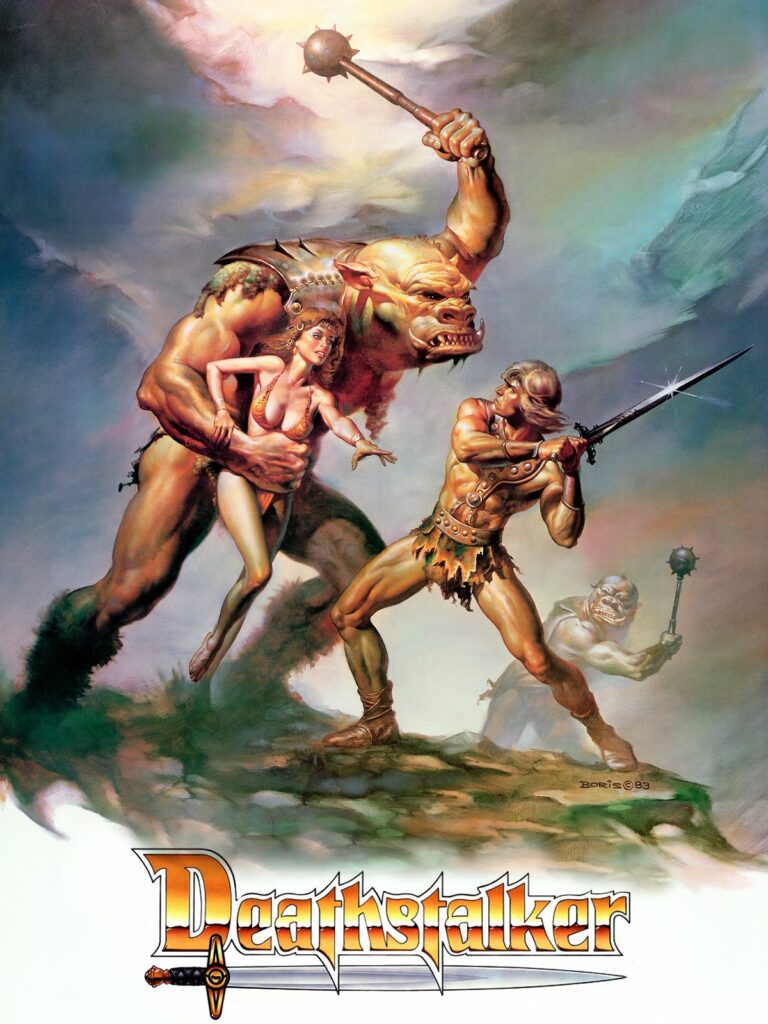
Deathstalker tells the story of, well, Deathstalker (Rick Hill) and his quest to acquire three magical items in order to defeat the evil sorcerer Munkar (Bernard Erhard). As Joe Bob puts it, “There’s rape and there’s pillage and there’s magic swords and there’s castles and there’s peasant hoards…”
The drive-in totals include but are not limited to: 30 breasts, 24 buttocks, limb ripping, spears through the gizzards, heads roll, leprosy fu. “Four stars. Joe Bob says, ‘Check it out!’”
Parental Advisory
This film has an almost absurd amount of sexual violence in it. It is rare for a woman to be on screen without there being sexual violence. If you are uncomfortable with watching that take place, Joe Bob does an accurate summation at each break. If you don’t want to hear about it, skip the second film entirely. As Darcy says, “This movie is very rapey.”
Thankfully, Joe Bob does also delve more into Corman’s history during the breaks. Corman struck a 10-picture deal with Héctor Olivera and Aries Films based out of Buenos Aires. Joe Bob credits this deal with saving Aries Film during a time of hyperinflation in Argentina. Apparently, The Argentine film industry wasn’t a fan of Deathstalker and criticized the exploitation inherent in its production.
The stunt-work in the film is impressive. While the stunts are fun to watch, it’s hard to forget that the performers were risking bodily harm at a pay-rate that was only acceptable because of Argentina’s economic situation. Joe Bob highlights the work of José Luis Arévalo as the character Pig-Face specifically as deserving praise and recognition.
A New World Order
Moving away from the film, Joe Bob goes deeper into Corman’s film distribution history. Starting with New World Pictures in 1970, Corman went on to create and sell various distribution companies. In the process, he created numerous sub-genres and launched the careers of several successful filmmakers. Martin Scorsese and Ron Howard are included in the list.
Corman would not allow someone to direct a film for him until they had editing experience. According to Joe Bob, Corman believes “editing is the key to great movies.” This calls back to his idea that 78 minutes is the perfect length for a movie.
Lack of Defense
The film performed well in America but was a dud in its production home of Argentina. Joe Bob notes early into the film, “I am, by the way, one of the few defenders of this movie.” Darcy agrees that she is also a defender of the film. I am not.
My rating for Deathstalker:
 (1.3 / 5)
(1.3 / 5)
Wrap it Up
Although Darcy never waded into the crowd to collect letters, fans still wrote on whatever scraps they had and threw them in the collection box. Darcy chooses four letters, but my favorite comes from Victoria from Virgina. She writes in with a topical blonde joke: “Why did the two blonds freeze to death at the drive-in? They went to see ‘closed for the winter.’”
The night can’t really end until Joe Bob tells his jokes, and that he does. As the night draws to a close, John Brennan and the Bigfeet come back out with Yuki to sing the mutant oath as a send-off. Appropriately, the night ends with the crowd lovingly chanting Joe Bob’s name.
While I may not be a fan of Deathstalker, the special overall was incredible to experience. Sitting live in the audience (and catching glimpses of myself on TV) is something I will never be able to forget.
It’s fascinating to see how the live experience translated to the screen, but production did a fantastic job making it seamless. The energy of the crowd is really what makes this special. Chanting will never be the same again.
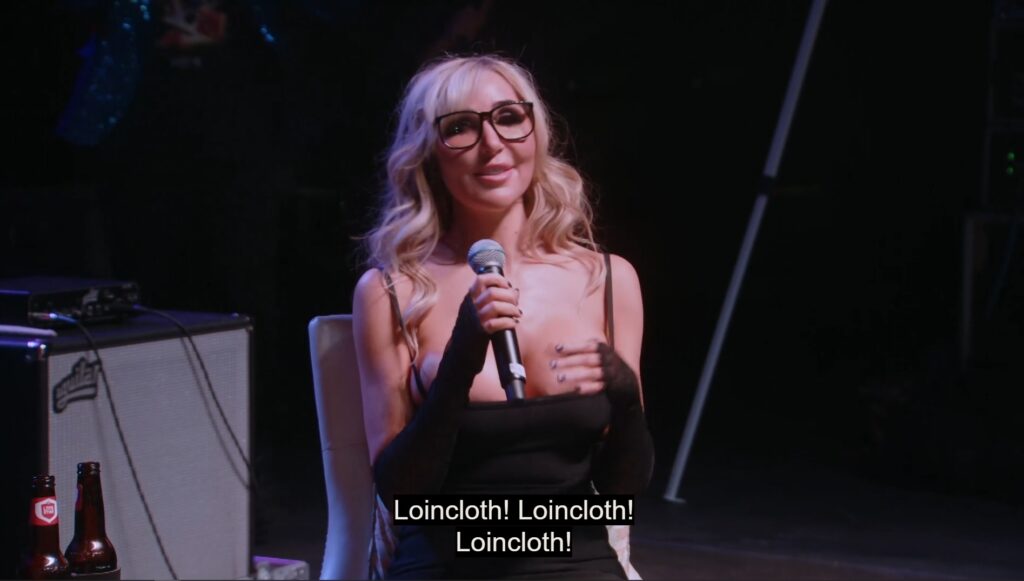
My rating for A Tribute to Roger Corman:
 (4 / 5)
(4 / 5)
Kait (she/her) haunts the cornfields of the Midwest after being raised in a small Indiana town built on sickness and death. She consumes all sorts of horror-related content and spits their remains back onto your screen. You can follow her on Twitter at @ KaitHorrorBreak, where she live tweets The Last Drive-In with Joe Bob Briggs and posts other spooky things.

You may like
Doctor Who
Identical: Yes. The Same: No – Exploring the World of AI Reconstructions in Doctor Who
Published
3 weeks agoon
March 19, 2025By
J M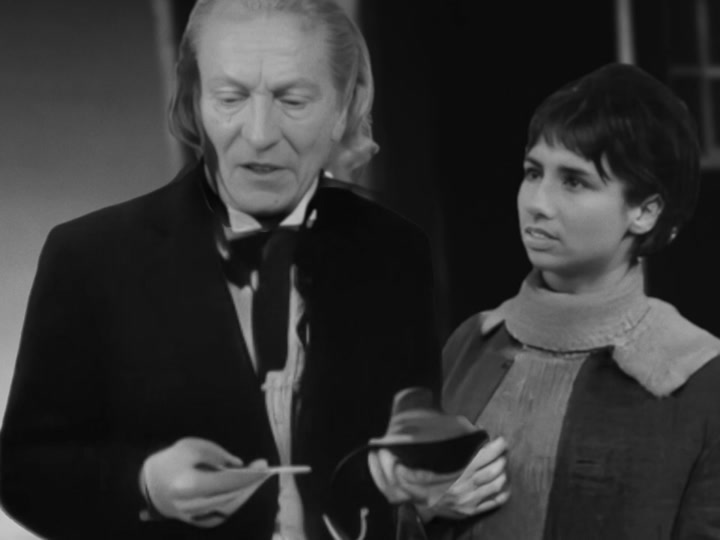
The second half of 2024 was a bit of slow for Doctor Who news. Ncuti Gatwa’s first season finished in June, and the Christmas special was months away. Comics and audio plays continued, and a Blu-Ray set of Season 25 was released – but that was all.
However, what was new and exciting was a spate of unofficial recreations of missing Doctor Who stories from the sixties. Re-animations of missing stories have occurred previously, both officially by the BBC and unofficially by fans. However, animation production time means it’s rare to have more than a few episodes a year. However within the space of six months, forty-four recreated episodes were released, with the promise of more to come.
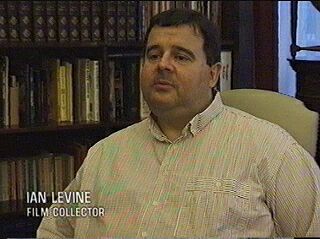
The reason how so many stories have been released so quickly is artificial intelligence (AI). These reconstructions are Generative AI, funded by professional songwriter, film producer, and fan, Ian Levine. This decision to make Doctor Who AI Reconstructions, to put it mildly, has been controversial online.
But is it worth it, in order to having otherwise missing stories returned to us? I’ve examined many of these Doctor Who AI reconstructions, and the discourse around them, to find out.
In Brief – Missing Episodes
A decent proportion of Doctor Who’s earliest years shockingly does not exist anymore. Doctor Who is one of the BBC’s biggest revenue raisers, and most famous show around the world. However it was not always the case.
When Doctor Who first began in 1963, the idea of keeping media was not really considered. Home video did not exist, and would not exist for two decades. Repeats were rare, due to the costs at the time to store old material and pay people involved in them. Also, old film presented a fire hazard. So it was often disposed of.
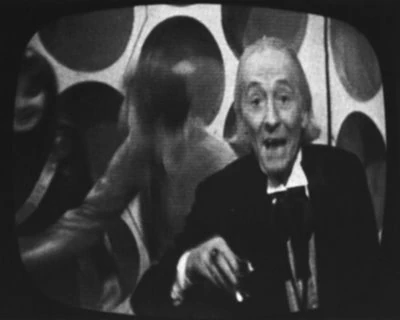
Despite this, Doctor Who is fairly lucky compared to other series. Firstly, fans at the time recorded the audio of each story. This means even the first ever Christmas Special – “A Feast of Stephen,” never broadcast internationally or repeated, still exists as an audio.
Doctor Who is also lucky because of only six seasons are not complete. In addition, of those six seasons, only half are missing only episodes from one or two stories. This allows us to get a feel for the early years of Doctor Who in a way fans of other series, like “Quatermass” and “The Avengers” aren’t able to. And part of the reason most of these early seasons survive is due to Ian Levine.
Who is Ian Levine?
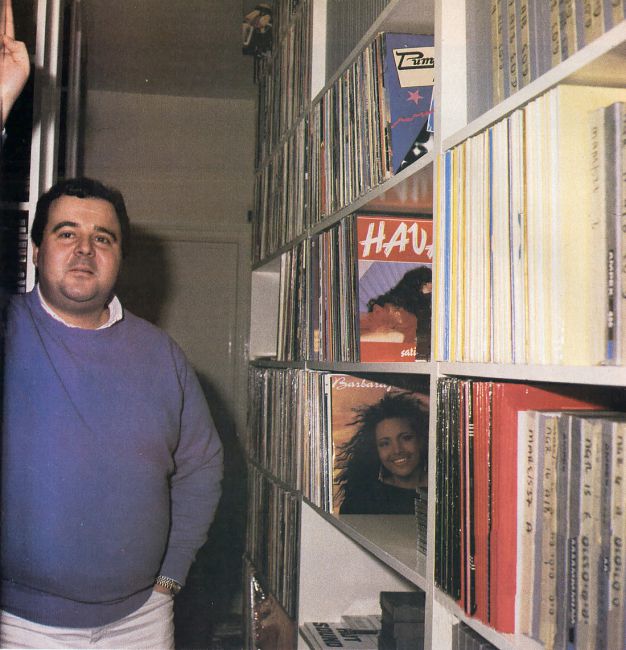
Ian Levine professionally is a songwriter and DJ. He has written and produced records connected to such bands as Take That, Pet Shop Boys, Bananarama and Bucks Fizz. His total sales exceed 40 million records.
He is also well known as a prominent Doctor Who fan. There are many prominent Doctor Who fans. The series from 2004 onwards has been largely made by prominent Doctor Who fans of the 70’s and 80’s. Many of these fans contribute to Doctor Who in official ways. For instance, many older fans have written books, or audio plays. All three showrunners for the modern series would be considered prominent fans from the nineties. For Ian Levine, his main contribution is seeking to find and restore missing episodes of Doctor Who.
This work started in 1978 where Levine reportedly requested the permanent halting of old episodes of Doctor Who. At the time the idea of home video was being considered, leading to more reasons to keep old film. Levine also claimed to have rescued the first ever Dalek story from being sent into a furnace. Following this, he began purchasing private copies of the remaining stories, and attempting to return them to the BBC.
He also connected with the Doctor Who Production Team of the eighties in other ways. This included composing the theme tune for the spin-off series “K-9 and Company”, and the protest/charity album “Doctor In Distress.” His was also consulted about continuity during seasons eighteen to twenty-two.
However, he also gained a notorious reputation as obsessive in an unappealing way. During the 1985 Doctor Who hiatus, Levine was encouraged by Producer Jon Nathan-Turner to use protest the decision. Levine argued against the decision on television, and smashed his television with a hammer, and inviting newspapers to photograph it.
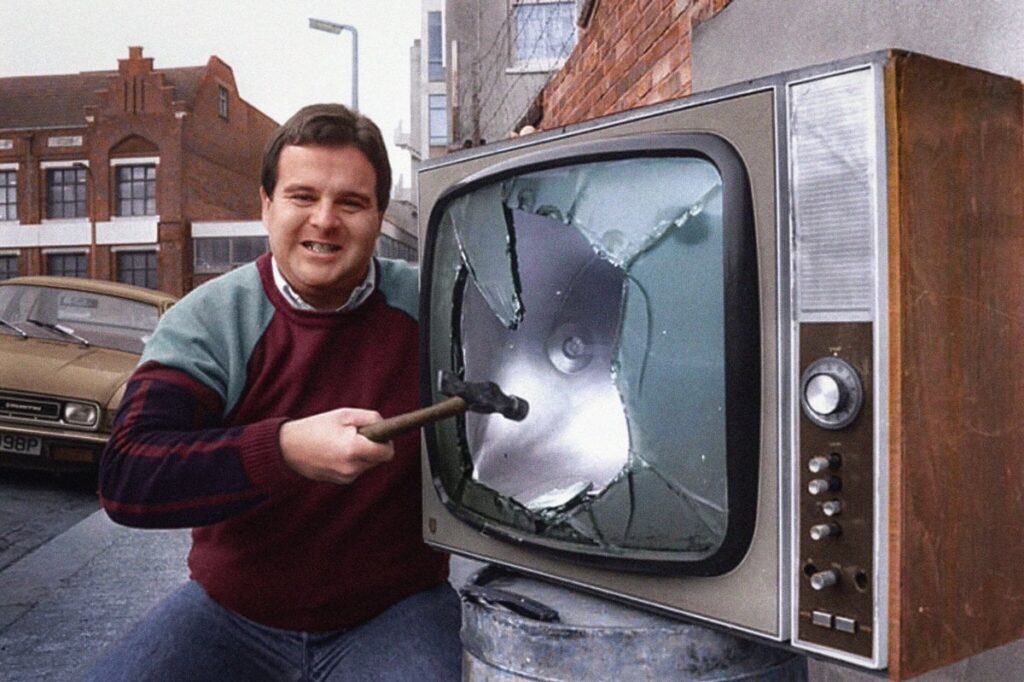
So he is fan who has both done great things, but also sought notoriety and negative attention.
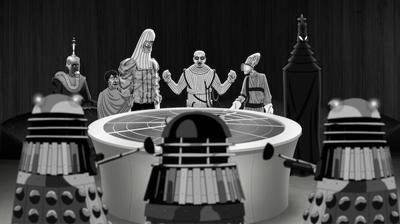
More recently, Levene has worked with animating missing or incomplete episodes. This started in 2010 with “Mission to the Unknown.” This was not allowed to be shared or sold due to it being made without BBC authorization. In 2013, Ian hired an animated reconstruction of the unfinished story “Shada.” This version used pre-existing footage and new audio to create a finished product he hoped could be licensed. However, the BBC chose not to. Instead they made their own animated version that was released four years later.
- Join the Doctor (Tom Baker), Romana (Lalla Ward), and K-9 (voiced by David Brierley) as a visit to a Time Lord living incognito on Earth leads to a desperate race to a distant prison planet
- A BBC strike halted filming of this never-broadcast Baker six-episode serial written by “The Hitchhiker’s Guide to the Galaxy” author Douglas Adams
- Christopher Neame, Victoria Burgoyne co-star
Last update on 2025-03-16 / Affiliate links / Images from Amazon Product Advertising API
Subsequently, Levine made comments regarding Jodie Whittaker as the first female Doctor which were deemed by many to be sexist. Levine responded by publicly quitting the fandom, though later created his own private Doctor Who Facebook group.
This group has now become the location where his AI recreations he has funded and received donations for are shared.
The Doctor Who AI Reconstructions – How to Access
The Facebook Page: “Ian Levine’s Facebook Group” requires an agreement to two questions to join. Firstly, you must agree to respect the right to criticize Jodie Whittaker. Secondly, you must recognise this is Ian Levine’s group for sharing his opinions on Doctor Who. Agree to all this, and you’re allowed in.
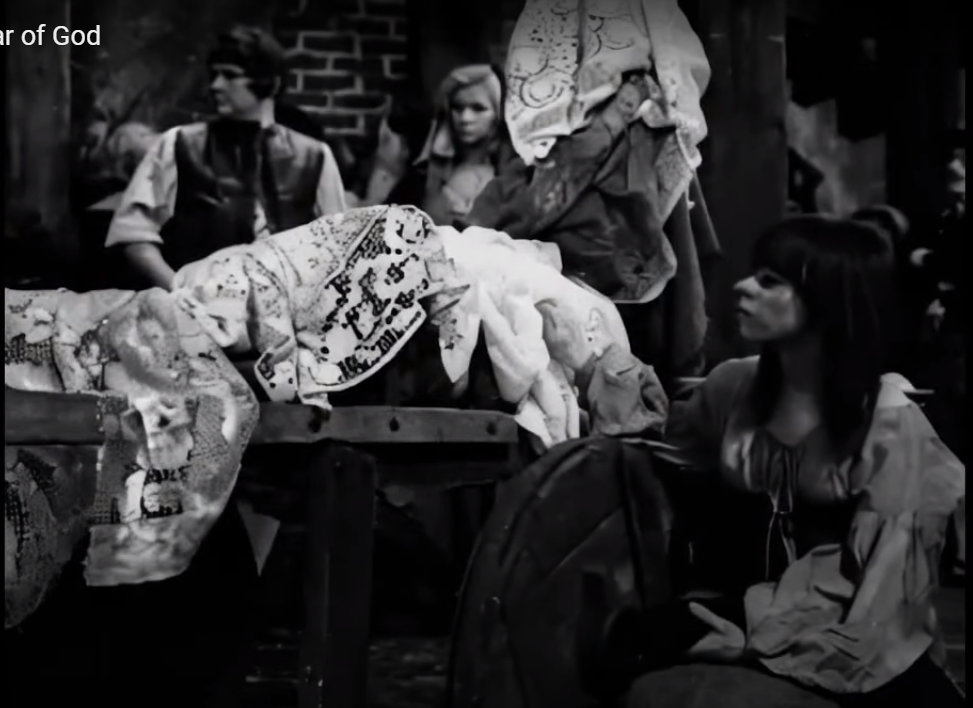
Inside the group, Levine has shared around twenty videos. This includesall of “The Dalek Masterplan,” “The Massacre,” and “The Savages.” However for the remainder, you must make a donation of fifty pounds, to become a contributor to the series.
Once your donation is confirmed, you are authorized to join the separate contributors group, for contributors only. This is where all the current videos being made are released.
Except…. None of these videos are unavailable privately. Ian Levine has placed them all on Youtube. They are unlisted, so they cannot turn up in either a Google or YouTube search. However, if you have a direct link or URL to them, they are accessible to everyone. Unlike other systems like Patreon which restrict content to only certain subscribers, nothing stops these links being shared elsewhere.
And of course, these links are shared. In response, Levine has issued threats and warnings against other Facebook groups and leakers trying to destroy his vision. In his group, people support him and join in denouncing those who criticize his work or mock it. People outside the group in response denounce Ian Levine and his supporters.
One thing I hate about internet culture is the push for tribalism. This is the idea we are joined in a selective tribe and must fight the rivals to connect. Over time the views become more strict in supporting your own tribe, and rejecting the opposition, and the middle ground is lost.
In the case of Ian Levine’s group, this is best shown by the view of alternative animations of missing Doctor Who stories. All of these are seen as not as good as Levine’s AI reconstructions. Levine’s reconstructions are seen as the only correct way Doctor Who is meant to be.
Initially Ian Levine’s AI project aimed to complete the ten missing stories not completed by the BBC. The initial project recognised the slow time it took to animate missing stories, and focused on stories that were difficult and costly to animate with people. Very soon after, however, Levine denounced many of the prior animations as “Silly Scooby Doo Cartoons.” The project was quickly extended to include stories previously animated by the BBC. Levine’s argument appears to be Levine’s objections to story changes animation had included. These included adding a surprise image of the Master in “Fury from the Deep”, prior to his debut appearance. Given Levine’s history of making things for the BBC, with the hope the BBC would license them, there have been rumours Levine initially was hoping the BBC would license some of his AI recreations, which has not come to pass.
Levine presents his animations as the most authentic way to view the missing episodes. Therefore appreciation of official animated reconstructions are not allowed. A poster saying they enjoyed the animated version of “The Celestial Toymaker,” was informed by Levine tht anyone who enjoyed the animation was unwelcome. Common responses of new animations being announced are people accusing the BBC of ruining another story. When Levine had a fault pointed out in one of his stories by Frazer Hines, who played the second Doctor’s companion, Jamie, Levine’s first response was to accept that the animation had limitations, but insisted it was still better than any animation the BBC has made. Most of all, posters all reinforce the message that AI reconstructions are the true version of the lost stories and the BBC are fools for not paying for them.
- The Celestial Toymaker sees the Doctor and his companions separated when they come up against the Toymaker
- While the Doctor plays the Trilogic Game, Steven and Dodo are forced to play their own seemingly childish, but ultimately dangerous games, with the aim of being reunited and getting back to the TARDIS
- Who will be the first to make a false move in this battle of wits, and will the TARDIS ever escape the Toymaker’s snare Fans of Doctor Who have long lamented the loss of the original 1966 master recordings of all except one of The Celestial Toymaker
Last update on 2025-03-16 / Affiliate links / Images from Amazon Product Advertising API
In response to this, or provoking this, depending on your point of you, external Facebook groups and YouTube channels are highly critical of the AI reconstructions. Some videos see them as threats, preventing the BBC from every investing in animation involving real people. Some hav dismissed the project as a scam.
So with such strong opinions on both sides, it’s time to actually watch them.
The AI Reconstructions
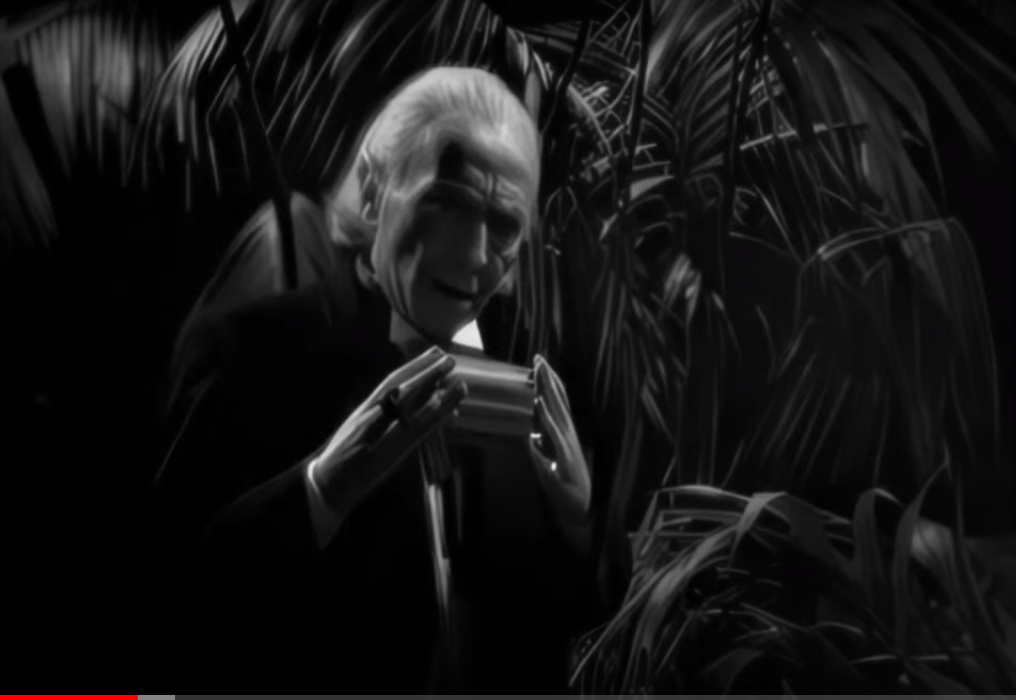
My first response on watching is they’re not that bad, but they’re not that good. Animation varies wildly in quality from story to story, making it hard to tell an overall trend towards or away from quality. However there are some good examples of how to recreate a story. “The Massacre” and “The Dalek Masterplan” for instance are incredible to watch. “The Savages” on the other hand is laughingly bad.
I chose to mostly focus on the stories not yet officially animated, so as to judge these stories by their own merit rather than compare to other animated versions of the same stories. However, it’s interesting the similarities that occur between the official animations and AI reconstructions. Non human characters (Particularly Daleks) look and move great, but people largely do not.
Animating People
Across most forms of Missing episode recovery, whether AI or human drawn, the difficulty is always animating people to show emotions and movement. Many of the official BBC animations often leave characters looking like stick figures bobbing up and down.
However one of the key things the official reconstructions provide is consistency. A human being develops a pre-existing model for characters, and because of this, these characters stay consistent over time.
AI on the other hand appears to forget things, or lose focus unless properly guided. People’s faces can change dramatically from shot to shot to the point, as in “The Savages” characters can be unrecognizable. This means, unlike with official animations, I often had to follow a story summary to figure out what was going on.
AI also forgets smaller things that make people seem human. In “The Highlanders” for instance the Doctor’s companion Polly does not blink for most of episode one, despite being in shot. This is a small detail, but throws the story into the uncanny valley – characters involve look like people but they feel wrong based on how they act.
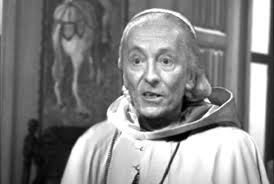
Movement is a struggle for all reconstructions because human movement is difficult to animate. Once again, “The Massacre” demonstrates small examples of movement than seem fluid, particularly in the first episode. “The Savages” on the other hand has main characters seemingly to perform scissor jump spread legged when the script call on them to walk.
How the animation occurs
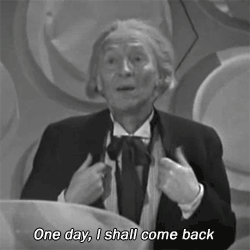
Having watched many of these animations, some of means AI generated these reconstructions became clearer. A lot of these animations, especially some of the later ones, do not actually generate much new material, instead using existing material in different ways. The First Doctor saying goodbye to Susan in the TARDIS, from Episode 6 of the Dalek Invasion of Earth, for instance is frequently re-used. This scene is redubbed multiple times in the reconstructions, when a missing story needs a scene of William Hartnell standing alone in the TARDIS.
Another method is using the telesnaps, and slightly animating the mouth and face. This creates a sense of fluidity and movement, but a very limited one. This is particularly noticeable in the Space Pirates. The resconstructions rely on switching between static photos of one cast member with mouths moving. On the one hand, this is no worse than the telesnaps, but the telesnaps were aware of their limitations, so often would use narration or subtitles to fill the gaps. However these reconstructions are presented as the most life like renditions of the missing episodes. As the original story did not have subtitles or narration, therefore, they are not allowed. As a result the story is incomprehensible.
Benefit – it exists
But despite the complaints, there is a significant benefit in these reconstructions. And that’s the fact that they exist.
Currently nine missing stories have not been officially animated by the BBC. I would love for all missing stories to be animated. However, the reality is most of the stories remaining might be too costly to animate.
Of the nine stories, six are pure historicals – stories with no science fiction elements apart from the TARDIS and its crew. These stories tended to have a larger number of human characters than stories with monsters, and a human being with their range of emotions is harder to animate than a Dalek.
Historicals also tend to have more detailed and complex scene change. A story in the future can replicate cold, grey corridors throughout a space colony. Historicals however must recreate significant locations in the world at particular times in history. Having to recreate 15th century France, for instance, is made up of multiple distinct locations. This makes historical stories more time consuming and therefore costly to animate. Therefore, despite stories being reanimated for almost twenty years now, the total number of historical episodes animated have been two – both missing episodes of the Reign of Terror.
For the remaining three stories, the limited human cast and isolated space station locations makes Wheel in Space relatively simple to animate. The Space Pirates, may also be animated as the story focusing mostly on space ships should make some aspects of the design easier to manage.
That just leaves The Dalek Masterplan¸ a massive twelve episode story, with a one episode prequel, where the Daleks chase the Doctor throughout time and space. The cast is huge, and while it is not a historical, the story would require animated sets of ancient Egypt during the building of the pyramids. None of this would be easy to do on the current BBC animation budget.
Therefore, it appears of the remaining nine missing stories, only two are highly likely to be animated.
And this is where AI can play a role. As AI does not rely much people, it means the costs to recreate a story like the Dalek Masterplan is significantly easier and cheaper than hiring a production studio to make it. While the end result is not as good as a professionally animated episode, for stories where hiring professional animations is not feasible, this is one way for people to observe a version of a story we otherwise cannot access.
Ultimately the frustrating thing about these reconstructions is they’re not allowed to be what they are. If they were simply an attempt to make otherwise lost stories more accessible, without any pretention or idea of superiority they would be fine. There are no shortages of fan made reconstructions, which vary in quality, but are all warmly received because they don’t pretend to be more than fan made animations. They are no better or worse than any other reconstructions.
If Levine’s reconstructions were presented with the same humbleness, the response would be more positive. If Leveine would present it as a project, and be accepting of others not needing to accpet them, there would be less retaliation online. But they aren’t presented as a fun way to view a loss episode. The reconstructions are presented as the only correct way to view the stories, superior than any other effort. In fact, he considers the stories no longer lost due to his AI reconstructions.
But by doing so, he puts the reconstructions on a pedestal of perfection. But they aren’t perfect, not by a long shot. By Leveine presenting these as perfect, he ultimately encourages people to notice how they are lacking by comparing to perfection. In comparison, more humble attempts of reconstruction, by presenting themselves as not the best, encourage people to notice what they do right.
So, try to enjoy the reconstructions for what they are. Some are surprisingly good – especially The Dalek Masterplan and The Massacre, and it’s a chance to see stories animated that you may not get to see animated elsewhere. But try to filter out all the rhetoric about how amazing and perfect they should be, and just enjoy them as they are.
 (2 / 5)
(2 / 5)
Related posts:
Movies n TV
Wheel of Time A Question of Crimson Is a Political Espionage Delight
Published
4 weeks agoon
March 17, 2025Episode two of Wheel of Time felt like the beginning of a long journey. Stories are unfolding, lives are changing, and blood is spilling.
Let’s discuss.
The story
We begin this episode in the past with Elayne’s mother, Queen Morgase. It turns out her rise to the throne was a bit, shall we say, cutthroat. So when she shows up at the White Tower, Siuan is concerned.
She might have reason to be, too.
Meanwhile, Rand, Egwene, Moiraine, Lan and Aviendha are in the Spine of The World. As they travel through some of the most breathtaking lands I have ever seen on a TV show, Egwene is plagued with nightmares. We think at first that’s just her trauma working itself through her system. But we soon find out that it might not be that straightforward.
Finally, Perrin returns home to heal after his hand is almost cut in half. But when he gets there he finds the town has been infested by Children of The Light. And they’re looking for him.
What worked
There was something heartwarming in this episode about political espionage and choking religious persecution. And that is Elayne’s relationship with her family.
I have consumed a lot of fantasy content with royal families. And I have never once heard a princess call her mother ‘Mum’. I’ve never seen royal siblings get along. And I have sure as hell never seen a princess have a good relationship with her step-parent.
This was refreshing. Even though Queen Morgase is kind of a horrible person she seems like a good mother. And that’s an unexpected delight.

Of course, this is just one storyline among many. And while this can sometimes be overwhelming, in this case it wasn’t.
I’ll be honest, some of these storylines are going to drag for me. I know this because I’ve read some of the Wheel of Time books and I have an idea that not all the characters exactly pique my interest.
No one likes all the characters. No one likes all the storylines. While I am here for the political espionage between Queen Morgase and Siuan, not everyone likes it. While others might be fascinated with Selene trying to win Rand back, I couldn’t care less.
Having multiple storylines keeps everyone’s attention better. So long as things don’t get out of hand. Things can easily get out of hand. But this seems to be managed well.
So far.
What didn’t work
As I mentioned above, I’m not thrilled with Rand’s story at this point. And while it’s fine to not like a storyline when there are this many to choose from, it’s not fantastic that the one I like the least is the one involving our two main characters. And anytime we were with the team at the Spine of The World, the only thing that brought me joy was Moirain’s hat. It reminded me of Stockard Channing’s hat in Practical Magic.
The problem is that Rand is Charlie Brown with controversial magical powers. He is boring, serious, and pessimistic.
And yes, I understand that he has a heavy emotional burden and he’s the Dragon Reborn and that’s quite taxing and all. But let’s be fair, there isn’t a single person in this show that doesn’t have a heavy burden. And most of them manage to be fun occasionally.

All that being said, this episode of Wheel of Time did exactly what it needed to do. It set up conflicts at each of the three locations. It established emotional ties between the characters and the events. And it established goals for everyone.
This was, in short, a solid episode. Not groundbreaking, not mind-blowing or life changing. It was simply good. It was entertaining and moved the plot forward.
Well done.
 (3.5 / 5)
(3.5 / 5)
Wheel of Time is back for season three. There are mixed feelings regarding this. Last season, there were some serious pacing issues. And some serious sticking to the book’s storyline issues. But we’re two seasons in, and we don’t give up so easily. So let’s dive into episode one, To Race the Shadow.
By the way, I highly recommend watching this episode with the subtitles on. You’ll see why.
The story
We begin this episode with Liandrin facing a trial of sorts for her rampant betrayal. She does her best to gaslight her Aes Sedai sisters into thinking that Siuan Sanche is the real traitor.

When that doesn’t work, she reveals how many Black Aes Sedai have actually infiltrated the tower.
Spoiler, it’s a lot.
In the aftermath, our whole team gathers to drink and enjoy one night of relaxation before they head out to the Tear to form an army for Rand. All is going well until they’re attacked by myriad creatures and a sentient axe.
What worked
This episode was long. It had a run time of an hour and eleven minutes. And a lot of that run time was spent in heavy dialog scenes.
Fortunately, these were well-done scenes.
If you’re going to have a lot of talking scenes, there are good ways and bad ways to do it. Last season, we saw lots of examples of the bad way to do it. But this episode did it well. For one thing, other things were going on while conversations were taking place. The characters are drinking, playing games, walking through an interesting city. And the scenes themselves didn’t stretch out. They weren’t repetitive. We heard what the character had to say, then we moved on.
It was also nice that the point of these scenes wasn’t just info dumps. We had character development. We had romantic interactions. We had plot development and foreshadowing.
Overall, this episode felt like what it was. A moment of calm before a storm.
Taking a step back, I’d be remiss if I didn’t address the fight scene at the start of the episode. Because it was epic.
The magic looked amazing. The martial arts that went along with it looked fantastic. The costumes were beautiful. It was just incredibly fun to watch.
More than that, it was emotional. We lost some characters in that fight that were important. And it was clearly emotionally shattering for many of our characters, who found themselves betrayed by people they trusted.
So many of them.
It was a great way to open the season.
What didn’t work
Despite that, this episode wasn’t without its flaws.
First off, there were a lot of dialog scenes. And they were good scenes, as I’ve already discussed. But it was one after another after another. And when your episode is, again, an hour and eleven minutes, it’s maybe a little much to have so much chit-chat. Couldn’t some of these conversations, important as they were, have been moved to maybe another episode?
Finally, I want to talk about Egwene’s travel through the arches.

I feel like maybe there were some deleted scenes here. Because there must have been more to that visit than what we saw, right?
We could have seen Egwene battle Rand. That would have been badass and emotionally devastating. We could have seen her with a quiet life with Rand back home at the Two Rivers. We could have seen anything except for the quick clip of Rand in a bloody river, followed by Egwene being shoved back out in a bloody shift.
No products found.
Bad job. But at least it wasn’t an extended scene of Moiraine collecting bathwater, and then taking a bath while looking sad. If we’d started this season with another scene like that, it might have broken my brain.
Amazon dropped the first three episodes at once. So we’ll be back soon to talk about episode two. See you then.
 (4 / 5)
(4 / 5)

